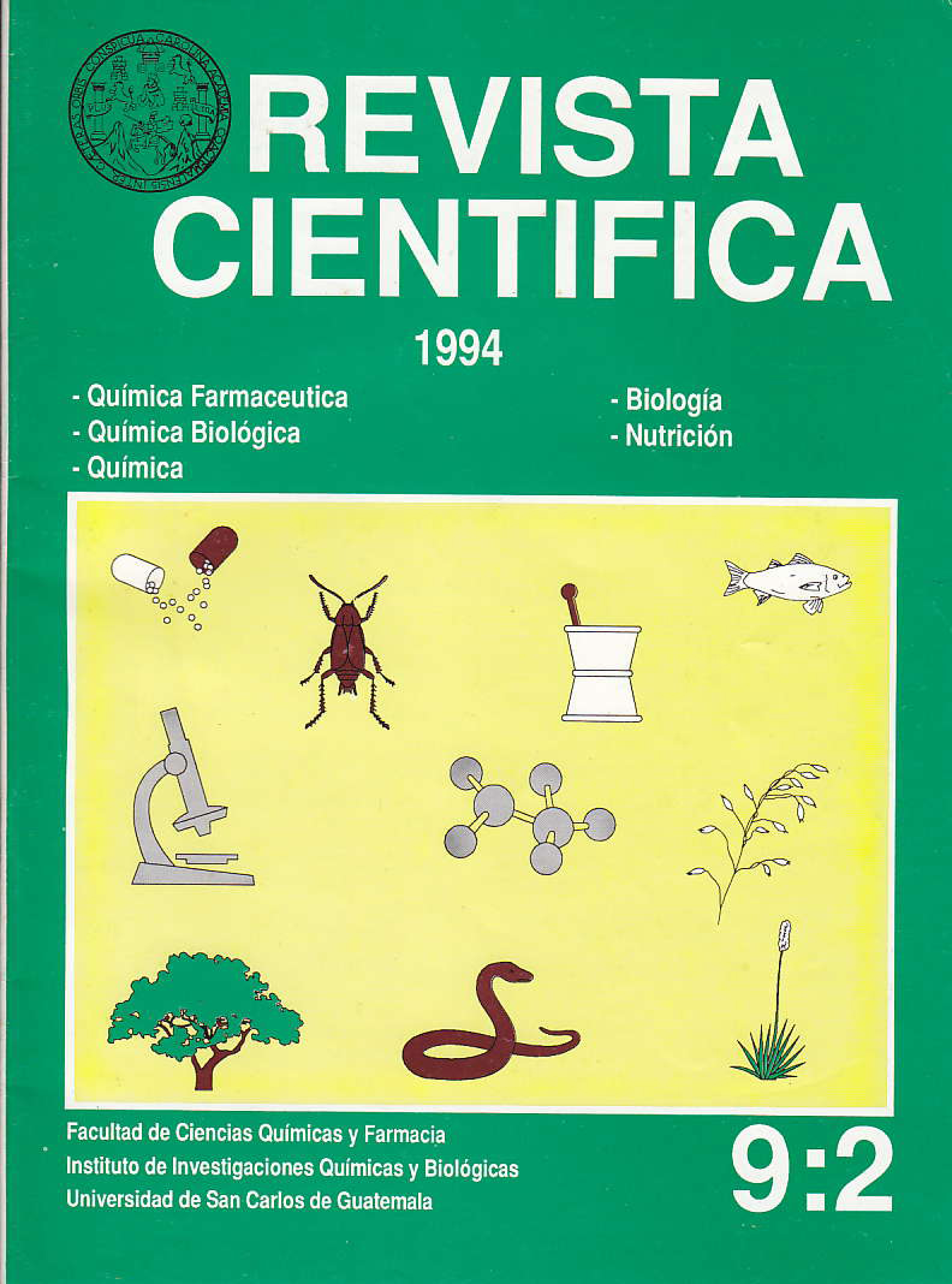Poisons and poisonous snakes and ophidism in Guatemala
DOI:
https://doi.org/10.54495/Rev.Cientifica.v9i2.379Keywords:
poisons, poisonous snakes, ophidism, GuatemalaAbstract
Snake bites in Guatemala are caused mainly by species of the Viperidae family. The venoms of snakes belonging to this family are characterized by causing a pronounced lethal effect consisting of pain, edema, ecchymosis, hemorrhagic phlycthemas and tissue necrosis, which frequently causes sequelae such as tissue loss or amputation of the affected limb. The pathogenesis has been attributed to the myotoxic effect, hemorrhagic action, local ischemia resulting from compression and proteolytic activity. As in other regions of the world, snake bites are practically restricted to agricultural workers and occasionally hunters and snake handlers. The incidence of bites throughout the year is variable and is related to the type of agricultural activity in each region, being generally higher during land preparation, harvesting and in the rainy season. The research consisted of the following stages: 1.1 Lexicological characterization of the venoms of the species Bpthrpps aspee (yellow beard), Bothrops nummifer (stone hand) and Crptalus dunssus durissus (rattlesnake). 1.2 Epidemiology of snakebite accidents: A retrospective study of 851 patients was carried out, in the period from 1988 to 1993 in six departments of the republic, finding that 32.66% were caused by B. aspee, 3.52% by Crptalus durissus durissus, 4.7% by B. gpdmanii (cantil) and in 58% the causal agent was not identified. 1.3 Determination of the degree of knowledge about snake bites by medical personnel. It was determined that only 24.8 percent have an acceptable level (average of 1.4 out of 30 points). Guidelines will be developed for identifying the causal species and treatment of snake bites.Downloads
References
Díaz EL. Efectos hemorrágicos y mionecróticos de los venenos de las serpientes guatemaltecas de las especies 8. aspergarmanyB. nummifermexicanus. Guatemala: Universidad de San Carlos de Guatemala. 100p. Tesis de Graduación. Facultad de C.C.Q.Q. y Farmacia)
Overall CP. Toxicidad de los venenos de Botrops aspery Botrogs nymmiferde Guatemala en ratón blanco. Guatemala: Universidad de San Carlos de Guatemala. 37p. (Tesis de Graduación Facultad de C.C.Q.Q. y Farmacia)
Bolaños R. Nuevos recursos contra el ofidismo en Centro América. 2a. ed. Costa Rica: Ministerio de Salud Pública, Universidad de Costa Rica. 29 p.
World Health Organization. Progress in characterization of venoms and standarization of antivenoms. Geneva. WHO Offset Publication. No. 58, 1991. 44p
Kondo H. et. al. Jap. J. med. Sci. Biol. 1960, 1 3-43, https://doi.org/10.1267/ahc1960.1960.43
Lamonte B., Gutiérrez JM. Rev. Biol. Trop. 1982, 31 37
Friedrich C, Tu AT. Biochem Phaemacol 1971 , 20:1549, https://doi.org/10.1016/0006-2952(71)90283-8
Gutiérrez JM, et. al. Toxicon 1985, 23:887-893, https://doi.org/10.1016/0041-0101(85)90380-0
Gutiérrez JM, Bolaños R, Chávez F. Rev. Biol. Trop. 1980, 28(2):341-351
Gutiérrez JM, Chavez F, Toxicon, Vol 18, pp 315-321, https://doi.org/10.1016/0041-0101(80)90011-2
Rojas G. et. al. Rev. Trop. 35(1):59-67, 1987. https://doi.org/10.1163/2589997X-03501005
Downloads
Published
How to Cite
Issue
Section
License
Copyright (c) 1994 A.M Valdés de García, S. Chuy, O. Lara, P. Torres, C. Escobedo, G. Ibarra

This work is licensed under a Creative Commons Attribution 4.0 International License.
Authors who publish with this journal agree to the following terms:
- Authors retain copyright and grant the journal right of first publication with the work simultaneously licensed under a Creative Commons Attribution License 4.0 that allows others to share the work with an acknowledgement of the work's authorship and initial publication in this journal.
- Authors are able to enter into separate, additional contractual arrangements for the non-exclusive distribution of the journal's published version of the work (e.g., post it to an institutional repository or publish it in a book), with an acknowledgement of its initial publication in this journal.
- Authors are permitted and encouraged to post their work online (e.g., in institutional repositories or on their website) prior to and during the submission process, as it can lead to productive exchanges, as well as earlier and greater citation of published work.









